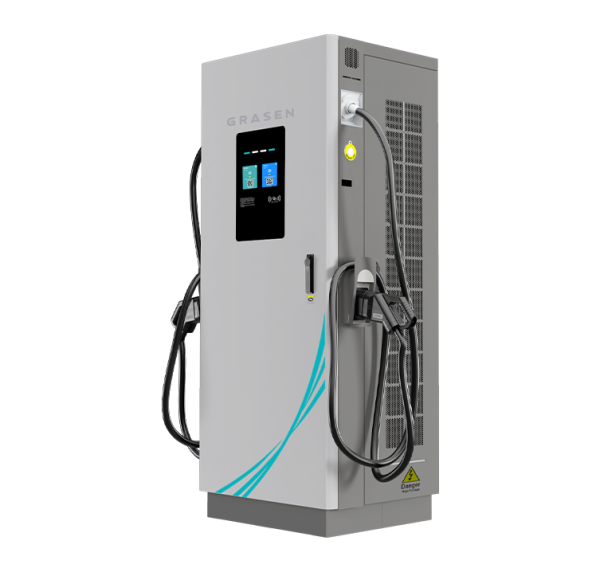As the world transitions toward cleaner and more sustainable transportation options, electric vehicles (EVs) have emerged as a front-runner in reducing carbon emissions. However, one of the significant challenges for EV adoption is the time it takes to charge the vehicle. While Level 1 and Level 2 chargers provide solutions for home and public charging, DC Fast Charger (DCFC) are revolutionizing the EV landscape by offering ultra-fast charging speeds.
What is a DC Fast Charger?
A DC Fast Charger is a type of electric vehicle charger that uses direct current (DC) to charge an EV’s battery. Unlike standard chargers, which provide alternating current (AC), DCFC bypasses the onboard AC-to-DC conversion process and directly delivers DC power to the vehicle’s battery. This enables the battery to charge much faster than with traditional methods.
DC fast charging stations are typically found at public locations such as highways, rest areas, shopping centers, and dedicated EV charging hubs. They are ideal for long trips or when a rapid recharge is required, making them indispensable for EV owners looking for convenience and minimal downtime.
How Does a DC Fast Charger Work?
DC fast chargers work by supplying a high-voltage current to an electric vehicle’s battery. The primary advantage of using direct current is that it can directly push energy into the battery, allowing for faster charging speeds. Most EVs equipped with DC fast charging capabilities can accept higher power levels, often ranging from 50 kW to 350 kW, depending on the charger and vehicle compatibility.
When an EV plugs into a DC fast charger, the charger communicates with the vehicle’s charging system to ensure it’s providing the correct power levels. The car’s battery management system (BMS) regulates how the energy is absorbed to avoid overcharging or overheating. While the charging process is much faster than with standard chargers, it’s important to note that the speed varies depending on the battery’s size, the charger’s output, and the current state of charge.
Benefits of DC Fast Charging
- Speed: The most significant benefit of DC fast chargers is the charging speed. While Level 1 chargers can take up to 24 hours for a full charge, and Level 2 chargers may require several hours, DC fast chargers can provide an 80% charge in as little as 30 minutes, depending on the vehicle and charger.
- Convenience for Long Trips: For long-distance travel, DC fast chargers are a game-changer. EV owners no longer need to worry about long charging stops, making electric vehicles a practical alternative to gas-powered cars for road trips.
- Compatibility: DC fast chargers are becoming more widely available across various locations, ensuring that EV owners have access to fast charging when needed. Major networks like Tesla Superchargers, Electrify America, and others have deployed hundreds of DC fast charging stations across the globe.
- Reduced Range Anxiety: Range anxiety—the fear of running out of battery charge on a trip—is one of the key barriers to EV adoption. DC fast chargers help alleviate this concern by providing rapid charging options on highways and in urban areas.
Challenges and Considerations
While DC fast chargers provide significant benefits, they do come with their own set of challenges:
- Cost: Installing and maintaining DC fast chargers is expensive. The chargers require high-powered electrical infrastructure and are typically more costly for both users and operators. Some charging networks may charge higher rates for DC fast charging to offset these costs.
- Battery Health: Charging an EV’s battery too quickly on a regular basis may degrade its lifespan. While modern EVs are designed with robust battery management systems to prevent damage, frequent use of DC fast charging can lead to a decrease in battery efficiency over time.
- Limited Availability: Despite the growing number of DC fast chargers, they are still not as ubiquitous as Level 2 chargers. Access can sometimes be limited in rural or less populated areas, although this is gradually improving as infrastructure expands.
- Vehicle Compatibility: Not all EVs are compatible with DC fast chargers. While most modern electric vehicles can handle fast charging, some older models or certain types of EVs may require an adapter or may not be equipped to take advantage of higher charging speeds.
The Future of DC Fast Charging
As the electric vehicle market continues to grow, DC fast charging technology will also evolve. New standards and technologies, such as ultra-fast charging at 800V or higher, are on the horizon. Innovations like wireless charging and more powerful charger designs will further reduce charging times and improve the user experience.
Governments and private companies are investing heavily in the expansion of EV charging networks to make DC fast charging more accessible to consumers. This infrastructure expansion is crucial to the widespread adoption of electric vehicles and the global push for cleaner energy.
